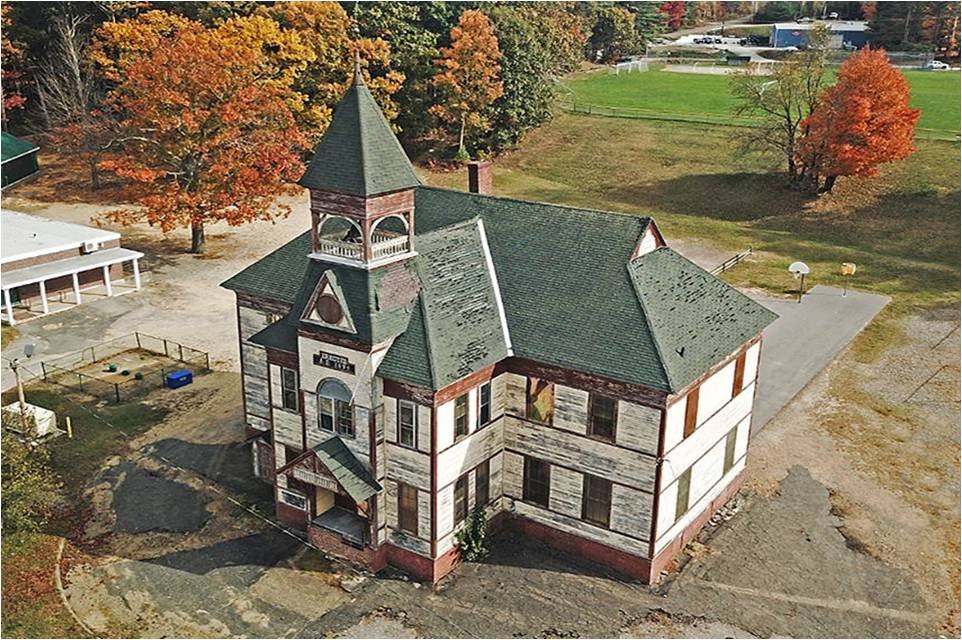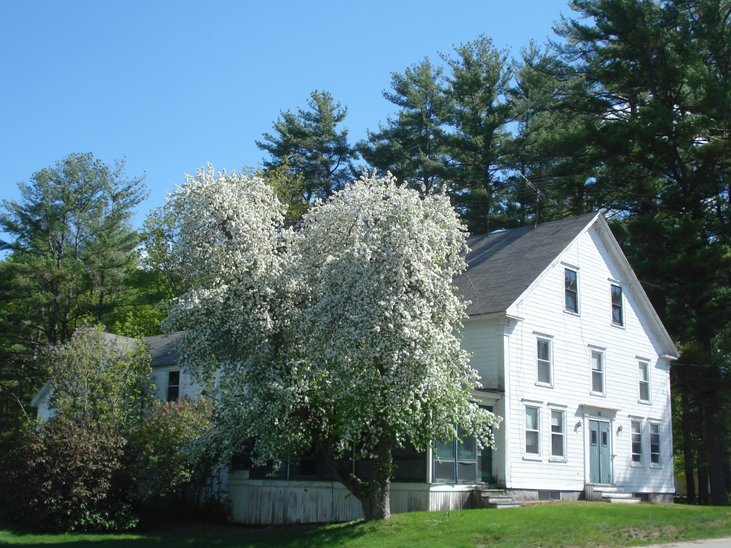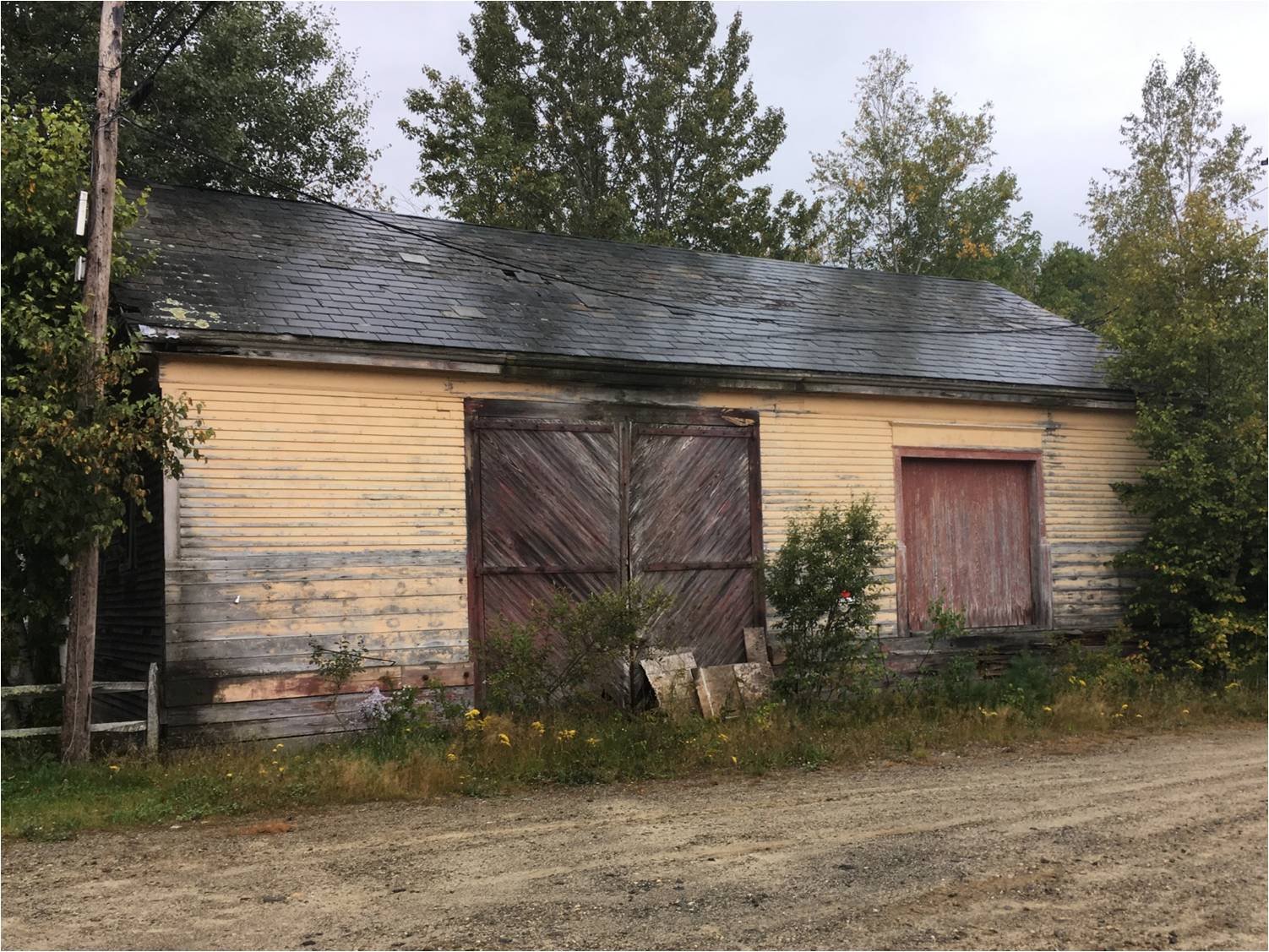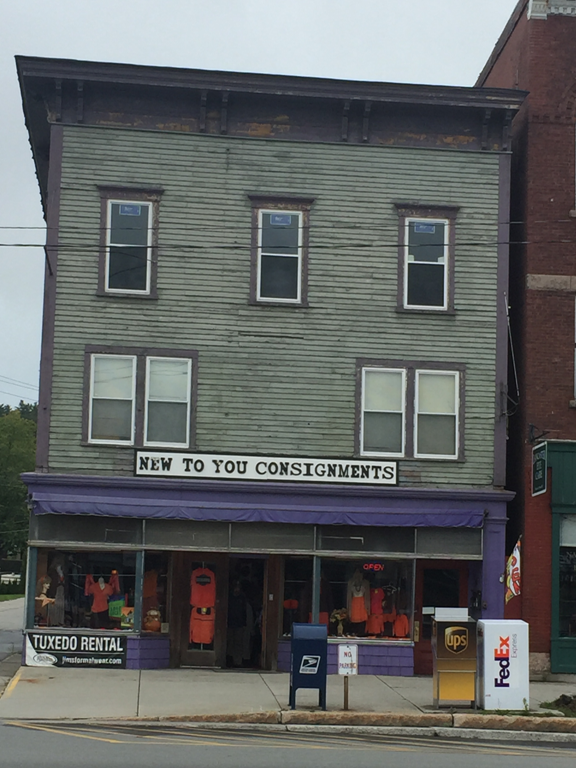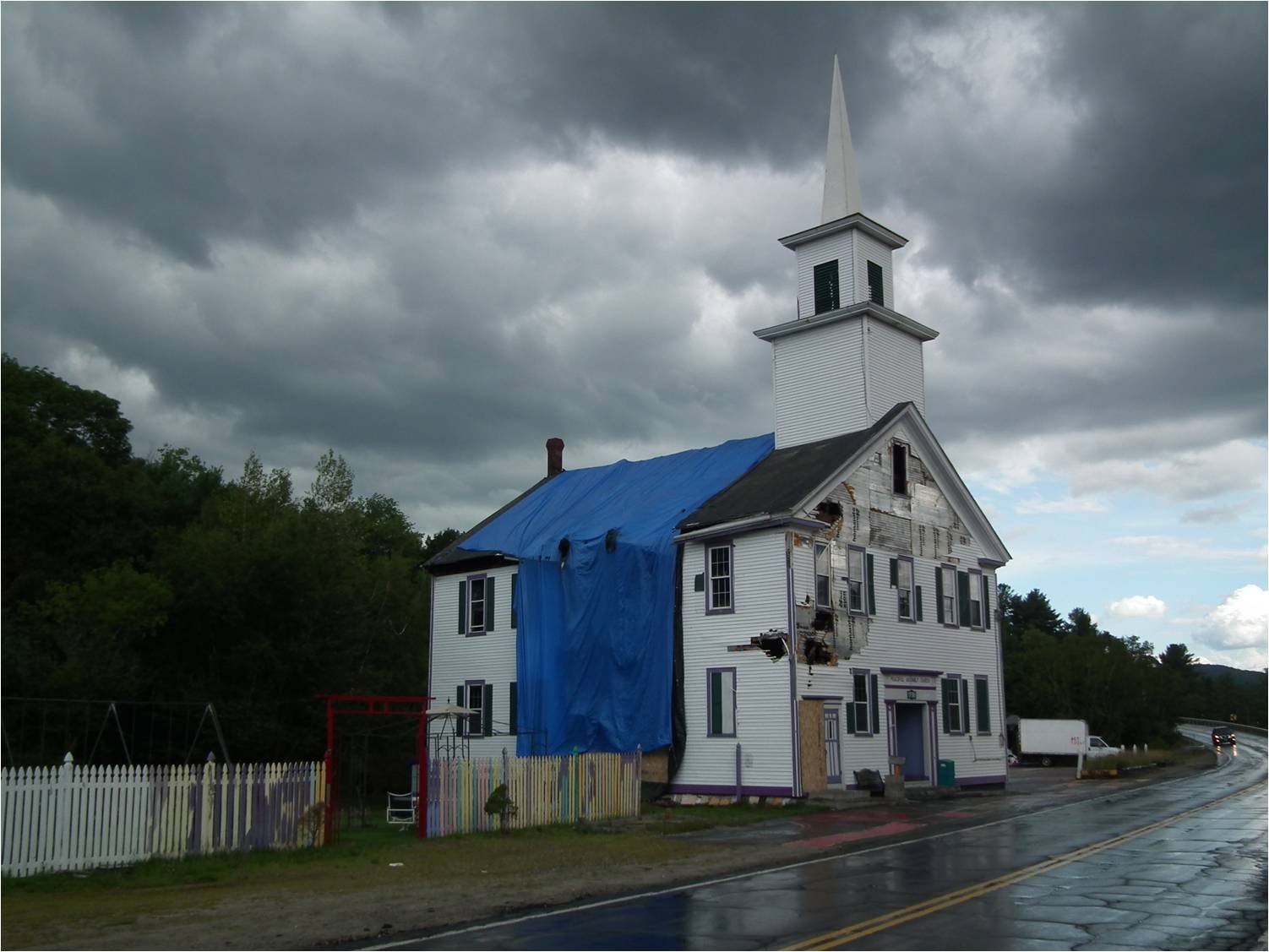Seven to Save Announced: Small Town Historic Assets Need Help
The New Hampshire Preservation Alliance has announced its 2017 Seven to Save list today, highlighting the danger to small towns that threaten to erase the state's sense of place and economic vitality. The list features a new group of endangered historic structures that include the first Catholic church in the Mount Washington Valley, a rare surviving timber frame fire engine house, headquarters of the pharmaceutical company that patented the sugar-coated pill, and a 1797 meetinghouse languishing after a devastating fire. Preservation Alliance leaders emphasized that saving special places and small town character should be essential ingredients in statewide campaigns to attract investment, draw new visitors and support local businesses.
“Our small town character makes our state distinctive,” said Jennifer Goodman, executive director of the Preservation Alliance. “The mix of our old with new building stock, and character and scale of historic main street buildings, attract a varied ages of types of people, help incubate small businesses and create attachments to communities that boost economic vitality.” While endangered properties in small towns have been in prior Seven to Save lists of the 11-year old program, this year’s list is remarkable in that all the listees are in towns with populations ranging from approximately 1,300 to 7,300.
Michael Duffy of Manchester, board member of the Preservation Alliance and chair of the Seven to Save committee, noted that “deterioration, demolition and the desire for new investment are some of the threats to the historic properties on this list. Here are seven great opportunities to transform threatened resources into vibrant community assets once again.” He noted that many of the listees are not yet well-known or understood, even in their own communities.
This year’s list, from largest to smallest town population, using most recent census information, are:
Gale School, Belmont After decades of discussion and reuse solutions, the final days for this 1894 stick style school are imminent unless the Shaker Regional School Board and the Save Our Gale School committee can commit to relocation and rehabilitation. The Save Our Gale School committee must now leverage its in-kind donations from local businesses and neighbors to raise funds and find a suitable site for the historic building’s next life.
Hope Engine Co. No. 1, Hinsdale Built in c.1850, this post and beam engine house was slated for demolition until one woman made it her mission to relocate it and restore it. Currently, it’s prepped for relocation, but its reuse and restoration are not yet certain.
French-Taylor House, Moultonborough This vacant town-owned Main Street house provides an important streetscape and green space for Moultonborough’s village, which has seen recent demolition. The Heritage Commission hopes to study reuse options that will highlight the building’s importance and usefulness to the town, and replace deterioration with reinvestment.
Boston and Maine freight shed, Canaan This colonial revival freight shed is one of few remaining railroad buildings along the former Northern Railroad corridor. Built in 1923-4 after a devastating downtown conflagration, this building offers excellent connectivity and reuse options, though its condition and complex ownership issues threaten the structure.
Parker J. Noyes Building, Lancaster This Italianate mixed-use block on Main Street was originally home to a pharmaceutical company that patented the sugar-coated pill and revolutionized food pellets for laboratory animal testing. It’s now in need of a plan to increase the building’s usability in a downtown that’s seeing recent investment.
Former St. Joseph Catholic Church, Bartlett The first Catholic Church in the Mount Washington Valley, this former church is now owned by the Bartlett School District and leased by the Bartlett Historical Society (BHS). It suffers from condition issues after years of uncertainty, but the Society has already raised $130,000 toward its eventual restoration and reuse as a museum and BHS headquarters.
Grafton Center Meetinghouse, Grafton A devastating fire damaged this 1797 meetinghouse at the head of Grafton Center’s common; a fire that also claimed the life of the resident minister. Today, the building’s immediate and substantial rehabilitation needs are hampered by a property tax dispute and lack of resources.
A special blog series offering more information on each will be coming your way next week.
The announcement was held at a Seven to Save success story – the Wolfeboro Town Hall. The Romanesque Revival Town Hall was listed to Seven to Save in 2009 when its second floor had been closed for decades and its future was very uncertain. Today, it is a once again the vibrant heart of the town after an award-winning preservation campaign led by the Friends of Wolfeboro Town Hall in partnership with the Town.
Criteria for Seven to Save include the property’s historical or architectural significance, severity of the current threat, and the extent to which the Seven to Save listing would help in preserving the property.
Preservation Alliance Field Services Representative Andrew Cushing underlined the value of the program by noting “we consider over half of the properties named to the list since 2006 out of danger and ‘saved’.” Completed rehabilitations include the Watson Academy in Epping, the Langdon Meetinghouse, and Manchester’s First High School, now Lowell Hall on the NH Institute of Art (NHIA) campus. Strong progress is being made at others including The Colonial Theatre in Laconia and Middleton’s Old Town Hall. Seven to Save sites with uncertain futures include the Balsams in Dixville Notch, Concord’s iconic Gas Holder House, the Chandler House in Manchester, Sanborn Seminary in Kingston, and the former Brown Paper Company’s R & D building in Berlin.
Saving and reviving historic places can help address New Hampshire’s export of young talent as well. According to a recent national study of millennials nearly all (97 percent) of the nation’s largest and most diverse generation appreciate the value of historic preservation. Commissioned by American Express and the National Trust for Historic Preservation, the survey reveals the salient role preservation plays in the millennial narrative and the development of communities courting this generation. One-in-two millennials view historic preservation as important through the lens of engaging in authentic experiences (52 percent), preserving a sense of community (52 percent) and creatively re-using structures (51 percent).
Seven to Save’s sponsors for 2017 include TMS Architects, Anagnost Companies, Christopher P. Williams, Cobb Hill Construction, Inc., Dennis Mires, P.A. The Architects, Enviro -Tote, Lavasseur Electrical Contractors, Inc.; Irish Electric Corporation; Milestone Engineering & Construction; Norton Asset Management; North Branch Construction; Innerglass Window Systems; Finegold Alexander Architects; Meredith Bohn Interior Design; Meridian Construction, Misiaszek Turpin PLLC and SMP Architecture, Windows and Doors by Brownell

